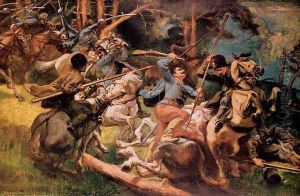Tardos, Viktor Paintings
Viktor Tardos was a Hungarian painter, born in 1879 in the town of Arad, which, at the time of his birth, was part of the Austro-Hungarian Empire and is now located in Romania. He displayed a keen interest in art from an early age and was known for his landscape paintings and his ability to capture the essence of the Hungarian countryside.
Tardos studied at the Hungarian University of Fine Arts in Budapest, where he honed his skills under the tutelage of renowned artists of the era. He was deeply influenced by the plein-air style of painting, which emphasizes the act of painting outdoors to capture the natural light and colors of the landscape. His work often featured rural settings, villages, and natural scenes that were rendered with a sensitivity to the changing qualities of light and atmosphere.
After completing his education, Tardos spent time traveling through Europe, including stays in Italy and France, where he was exposed to various artistic movements and styles. These experiences broadened his artistic vocabulary and allowed him to incorporate elements of Impressionism and Post-Impressionism into his work. Despite these influences, Tardos remained committed to depicting the Hungarian landscape and often returned to his homeland for inspiration.
Throughout his career, Tardos exhibited his work in numerous galleries and was well-received by critics and the public alike. His paintings are characterized by a harmonious color palette and a loose, expressive brushwork that captures the mood and atmosphere of his subjects. He was not only a landscape painter but also created portraits and genre scenes that provide a glimpse into the everyday life of Hungarians during the early 20th century.
Viktor Tardos passed away in 1935, leaving behind a legacy as one of Hungary's notable landscape painters. His works continue to be appreciated for their contribution to the Hungarian art scene and are displayed in various art museums and private collections. He remains a respected figure in the history of Hungarian art, known for his dedication to capturing the spirit of his native landscape.
